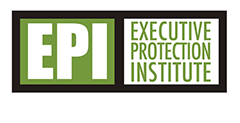You get THE call. Your employer needs someone that can adapt and make it happen. Here’s what the employer needs: “Can I count on you to meet up with the team, pick up the principal at the airport, take him to his event and get him safely back on the plane?”
You say, “Absolutely.”
The employer responds, “Great, that’s exactly what I need right now. He lands in 8 hours.”
“Do you plan your routes?”
I’m confident that almost all of us would say, “Yes, of course I plan my routes…!”
“Do you analyze your routes as well?”
“Huh?”
Can you explain the difference between route planning and route analysis?
Allow me to borrow from my experience in the military. Of course, the following is a simplistic (and in some instances, a textbook) view, which may not accurately reflect the experiences of the reader. But let’s address that later.
In the military, route analysis for the combat engineer or the motor transportation specialist take into account variables such as load weights, bridge ratings, road material and weather. I’m sure there are a million other variables with books and books of data tables to pull information from.
But the infantryman has an entirely different perspective on route analysis. The infantryman is thinking about how to counter known and potential threats. Such as how to use the terrain to mitigate the effectiveness of the enemy’s weapon systems. Or how best to maneuver an obstacle in order to avoid known enemy tactics.
The military commander has the ability and wisdom to consider the various inputs of route analysis, but the commander is different. Responsible for the overall accomplishment of the mission, the commander is focused on route planning. He or she is constantly considering the best routes for efficient completion of the mission.
So… what’s the difference, exactly?
Let’s look at the first question I asked, do you plan your routes?
Does that plan incorporate the appropriate analysis of the route? Did you or someone else consider the most likely and most dangerous enemy weapon ranges? Trajectories? Firing positions? Recommendations?
Did the analysis identify what actions the enemy would have to do in order for him or her to bring harm or embarrassment to your principal? How about enemy timing of his actions and equipment needed? What mitigation actions can you take?
Did the analysis identify and recommend countermeasures to potential hazards? Such as weather and road conditions or trip and fall hazards? The teammate that’s going to be opening the door, does he or she have a cold or cough? (Might want to reassign that team member.)
I think you get the idea. It can get complex. So how do we make it all happen?
In our industry, we probably don’t have the resources to commit to such an exhaustive planning effort on every route. But we do it anyway, in the time we can squeeze out and with whatever resource we can find.
There lies our challenge.
As protectors, we have embarked on a massive, never-ending quest of learning to be better, faster. We need to be able to tailor route planning and analysis to our everyday life as a protector, learning how to quickly and effectively apply those skills. I am thankful for the education I received at the Executive Protection Institute Providing Executive Protection Program and the Professional Bodyguard Association Recognition of Prior Learning course. The information I received helped me to understand how I could bring it all together.
Through practice, I have become more efficient than I ever was. I’m confident in my ability when an employer calls and says, “Can you adapt?”
Justin Bondietti, PPS; Executive Protection Institute Graduate, NLA Member


